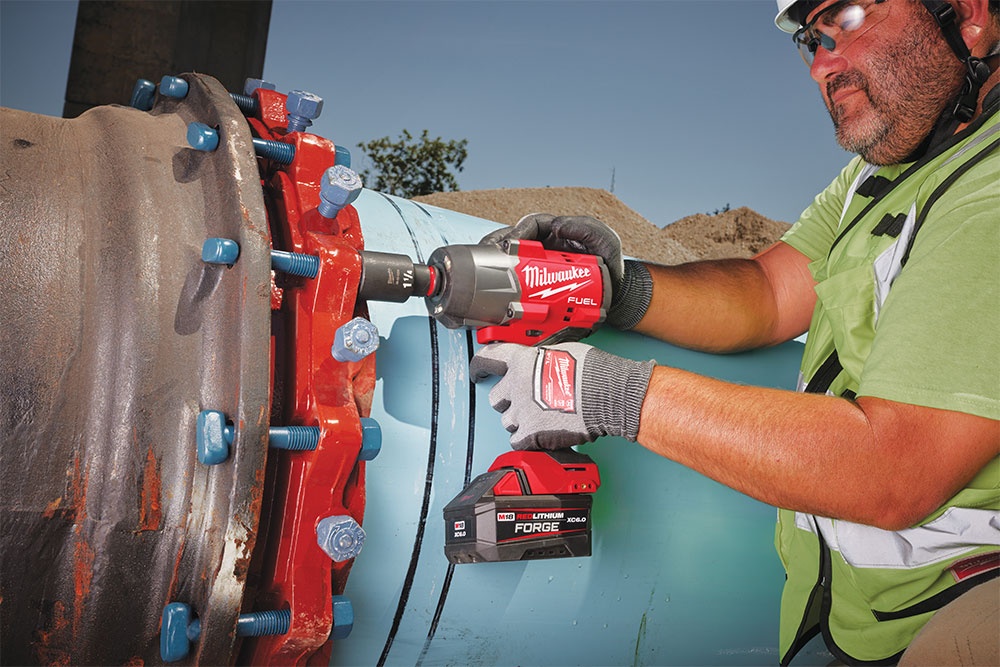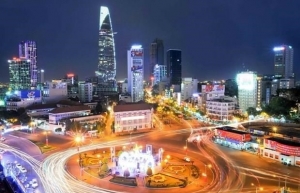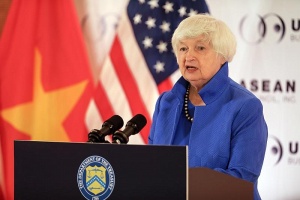Fresh US investment likely on back of presidential visit
 |
| Fresh US investment likely on back of presidential visit, Photo: TTI Group |
The Ministry of Foreign Affairs last week confirmed that US President Biden will pay a state visit to Vietnam where he will meet with Vietnamese leaders and discuss new measures to expand economic, trade, and investment relations. The visit is made at the invitation of the General Secretary of the Central Committee of the Communist Party of Vietnam Nguyen Phu Trong.
The visit will celebrate 10 years of comprehensive partnership between Vietnam and the United States. It will be President Biden’s first visit to Vietnam since he took office in early 2021.
According to the White House’s press secretary Karine Jean-Pierre, during the trip to Vietnam, President Biden will meet Party leader Trong and other top Vietnamese leaders, discussing ways to further deepen cooperation with Vietnam.
“They will explore opportunities to promote the growth of a technology-focused and innovation-driven Vietnamese economy, expand our people-to-people ties through education exchanges and workforce development programmes, combat climate change, and increase peace, prosperity, and stability in the region,” Jean-Pierre said.
Vietnam and the US normalised relations in July 1995, before upgrading their relationship to comprehensive partnership in July 2013.
With his visit to Vietnam in 2000, former US President Bill Clinton was the first to visit Vietnam after the two countries forged diplomatic ties. His successors George W. Bush, Barack Obama, and Donald Trump all visited Vietnam during their presidency.
Deeper investment
At present, trade and investment are the core of the bilateral relationship. The US seeks a secure and resilient semiconductor supply chain from Vietnam. Vietnam seeks greater investment and market access to the US given the downturn in the global economy.
According to Vietnam’s Ministry of Planning and Investment, cumulatively as of August 20, the total US registered investment capital in Vietnam reached nearly $11.8 billion for nearly 1,300 valid projects, making the US the 11th largest foreign investor in Vietnam.
From January to August 20 of this year, the total newly registered and newly added capital, stake acquisitions, and capital contributions from US investors in Vietnam hit $490 million – including 72 new projects registered with $75 million. This has made the US the eighth-largest foreign investor in Vietnam.
In March, a mission including 52 enterprises from the US visited Vietnam to seek business and investment opportunities. This is the largest-ever US business mission to Vietnam.
During a visit to the US by Vietnam’s Prime Minister Pham Minh Chinh in May 2022, enterprises from both countries worked on cooperation deals and trade contracts worth over $30 billion.
Many other US groups are also exploring opportunities in Vietnam, such as Intel, General Electric, Cargill, AviaWorld LCC, Cantor Fitzgerald, and UPC Group. They believe Vietnam is a dynamic market with great potential and hope to expand their business and investment in the country.
“It is important to know that while Vietnam’s official investment statistics rank the US quite low, the truth is that the US is one of the top investors in Vietnam. The misunderstanding comes from complicated US tax laws, and corporate structures that utilise global supply chains and systems,” said Adam Sitkoff, executive director of the American Chamber of Commerce in Hanoi.
For example, Intel’s $1.5 billion assembly facility in Saigon High-Tech Park is an investment made through Intel Hong Kong – so this counts as a Hong Kong investment even though Intel is an American company. Another example is P&G’s $100 million factory down in the southern province of Binh Duong, which is an investment made through P&G Singapore – so this counts as a Singapore investment even though P&G is a famous American company.
“There are many examples like this. We believe the US is one of the top five investors here and Americans are in Vietnam selling cosmetics, soft drinks and beer, cars, aircraft, software, industrial goods, educational services, mobile applications, financial and legal services, agricultural products, and so much more,” Sitkoff said.
According to the Vietnamese Embassy to the US, the sectors that US businesses hope to invest in and cooperate with Vietnam include high technology, energy, agriculture, healthcare/pharmaceuticals, finance, aviation, and tourism.
Meanwhile, a number of Vietnamese companies have also set foot in the US market. For example, carmaker VinFast started trading on the Nasdaq, while it builds an electric vehicle (EV) factory worth $4 billion in North Carolina, marking an important step in the company’s strategy to expand its market.
VinFast has already exported 3,000 EVs to the US and opened a number of show rooms in California. The company’s facilities in Vietnam produce 300,000 EVs a year, and this will be increased when the plant being built in North Carolina begins production in 2025. This plant is expected to produce 150,000 EVs a year.
Increased trade
The foundations for Vietnam-US economic cooperation through the comprehensive partnership set more than 10 years ago. Further back, two-way trade between Vietnam and the US has increased from $450 million in 1995 when the two countries established their diplomatic relations, to $123.7 billion last year, and $71.6 billion in the first eight months of this year.
“Not only has our trade grown, it has become more dynamic, diverse, and complex. Exports from the US now include a dizzying assortment of products, including machinery, computers and electrics, textiles, agricultural products, and more. Similarly, Vietnam has become a significant supplier of products to the US, including apparel, footwear, furniture, seafood, and electronics,” said US Ambassador to Vietnam Marc E. Knapper.
“Vietnam is also a key node in supply chains for goods that are vital to the American economy: from the semiconductors that power everything from our phones to our cars, to the solar panels driving the clean energy revolution and fight against climate change,” the ambassador said.
“Our supply chain links are not a one-way street, as Vietnam imports American-made computer chips, hardwood, cotton, and animal feed, and fuels its production of electronics, furniture, apparel, livestock, and seafood,” he said.
During her February visit to Vietnam, United States Trade Representative Katherine Tai highlighted the importance of the US Indo-Pacific Economic Framework for Prosperity (IPEF) and the US-Vietnam Trade and Investment Framework Agreement (TIFA), which help both economies to increase trade and investment cooperation.
“The trade and investment relationship between the two countries have and will continue to flourish. The US is now the largest export market of Vietnam, and Vietnam is among the US’ top 10 largest trading partners,” Tai told VIR. “The US and Vietnam have discussed the TIFA to increase two-way economic ties. We organised a TIFA council meeting in 2019 and will continue doing so in the near future.”
Meanwhile, the IPEF has four pillars including trade; supply chains; clean energy, decarbonisation, and infrastructure; and tax and anti-corruption. Vietnam is free to pick and choose which pillar or pillars it would like to contribute to.
“The US and Vietnam have become trusted partners based on years of dealing with each other,” said Carl Thayer, emeritus professor at the University of New South Wales. “The US and its private sector corporations are major developers and players in AI and quantum computing technologies. Vietnam would benefit from their direct investment, joint ventures with Vietnamese partners, the transfer of management and technical skills, and market access.”
According to the Vietnamese Embassy to the US, in order to grasp opportunities of economic cooperation with the US, Vietnam should maintain high-level relations with the US to promote their partnership momentum, develop the key exports to the US, create more favourable conditions for US products to enter Vietnam, soon sign a double taxation avoidance agreement, and approve common principles on auditing to facilitate US investment in Vietnam.
| Marc E. Knapper - US Ambassador to Vietnam
Over the last several months, we’ve been commemorating the 10th anniversary of our two countries’ Comprehensive Partnership. We’ve done this with visits by senior leaders going both ways. In late March, President Biden spoke with General Secretary Nguyen Phu Trong. At the time, the two leaders tasked our respective governments to figure out how we elevate our partnership to new heights. They also talked about trying to visit each other, and the US president’s upcoming visit is a wonderful combination of all these efforts and is a great way to implement the wishes of our leaders. This visit will help to send a strong message to people in both countries about how important and consequential the relationship between the United States and Vietnam is. The basic and essential policy of the United States is to support a strong, independent, prosperous, and resilient Vietnam. We support Vietnam, its territorial integrity, sovereignty, independence, and we respect each other’s political system. With this visit, we’re going to look for ways to deepen even more our shared commitment to these goals, whether it’s working with Vietnam to create an innovation-driven economy, whether it’s working with Vietnam, on education cooperation, diversifying and strengthening supply chains of high-tech items like semiconductors. These will be significant features of the visit. The message will be a good one – one that’s optimistic and future-oriented. We will make people in both the United States and Vietnam understand, even better, how important our relationship is. We’ve seen tremendous growth in the last 10 years of our bilateral trade. Significantly, we’ve seen growth in investment, not just froms the United States into Vietnam, but also from Vietnam to the United States. VinFast, for example, announced its investment in North Carolina, and just broke ground on its new factory. We have seen VinFast list in the US and it’s exciting to see other companies interested in doing the same. It shows how increasingly interconnected our two economies are. We’re very pleased with Vietnam joining with the United States and 12 other countries to launch the Indo-Pacific Economic Framework. This effort will go a long way to promote things that our countries in the region need – secure supply chains, and the promotion of green infrastructure. Climate change has also been significant, through efforts such as the Just Energy Transition Partnership. The United States is the largest contributor to this, along with other countries in the G7 and some private sector participants. In these areas, we can still see the potential for future growth. I’m a big fan of education cooperation. Vietnamese young people go to the United States, American young people come here either to teach English through Peace Corps programme or to study themselves, Fulbright University of Vietnam in which we bring an American style liberal arts education to Vietnamese young people, and perhaps increasingly others in the region – these people-to-people ties are critical to building even stronger foundation for all areas of our two countries’ ties in the future, in trade, investment, national defense, security, science, technology, culture. I’m very optimistic going forward. There’s still a lot of work we can do together for the benefit of the peoples of Vietnam and the United States. |
 | HCM City calls for US investment to 10 major projects Ho Chi Minh City has called on US enterprises to invest in 10 major projects of the city, especially those in infrastructure construction. |
 | Vietnam's rising role drives surge in US investment The growing importance of Vietnam in global supply chains, particularly in the semiconductor industry, is attracting significant investment from major US companies. |
What the stars mean:
★ Poor ★ ★ Promising ★★★ Good ★★★★ Very good ★★★★★ Exceptional
Related Contents
Latest News
More News
- PM orders investment model for North–South high-speed rail (December 22, 2025 | 17:43)
- First members of Danang International Finance Centre revealed (December 22, 2025 | 17:39)
- Securing capital and efficiency for Vietnam’s 2026-2030 growth ambitions (December 17, 2025 | 10:00)
- Driving double-digit growth through green and circular transformation in Vietnam (December 17, 2025 | 09:00)
- Vietnam bucking trend in the global M&A landscape (December 16, 2025 | 14:20)
- Vietnam’s green transition demands collective financial action (December 15, 2025 | 12:00)
- VIR workshop highlights capital and policy for sustainable development (December 15, 2025 | 11:00)
- National Assembly approves pilot mechanisms to accelerate major projects in Hanoi (December 12, 2025 | 11:29)
- Vietnam eases policy approval requirements, simplifies foreign and outbound investments (December 11, 2025 | 17:53)
- Unpacking new momentum in Vietnam’s M&A market (December 10, 2025 | 09:59)


 Tag:
Tag:




















 Mobile Version
Mobile Version